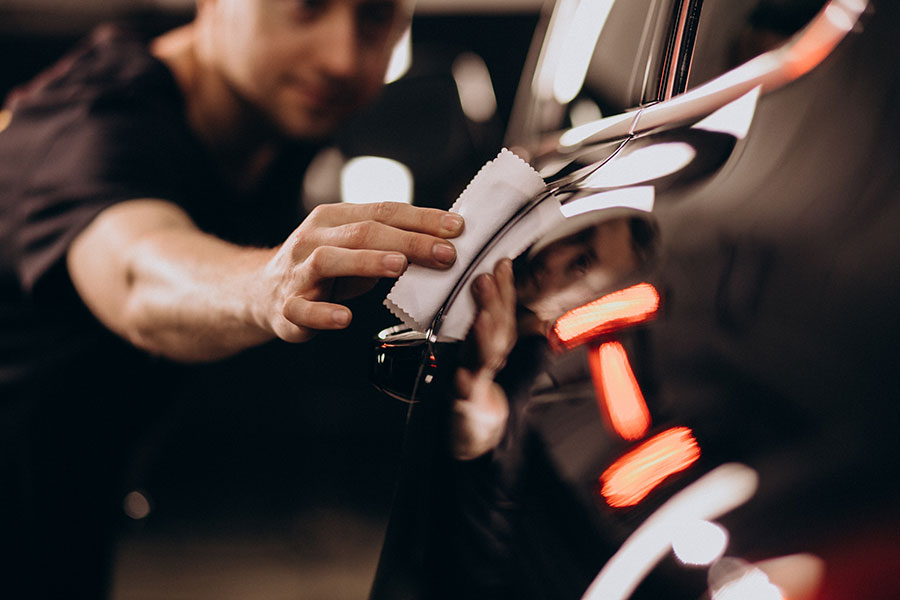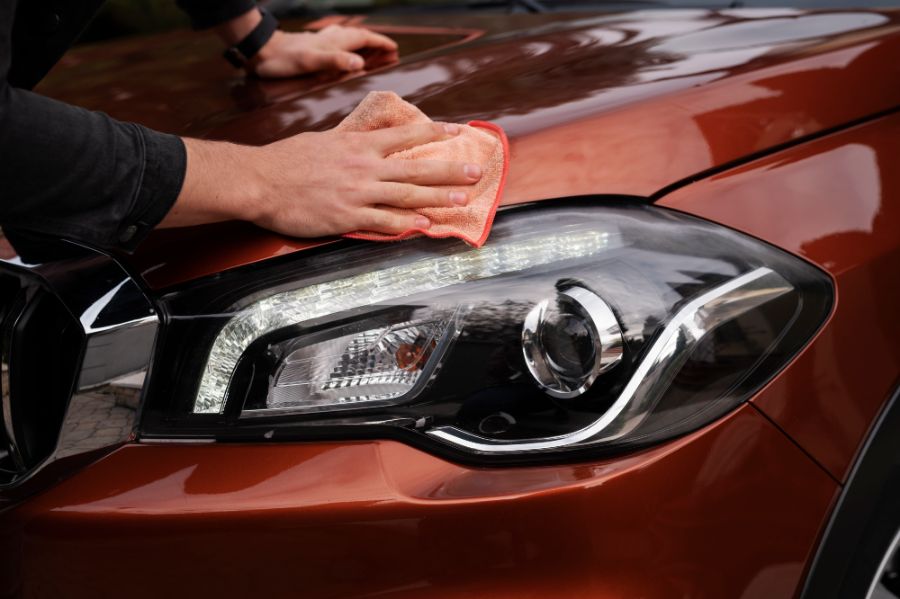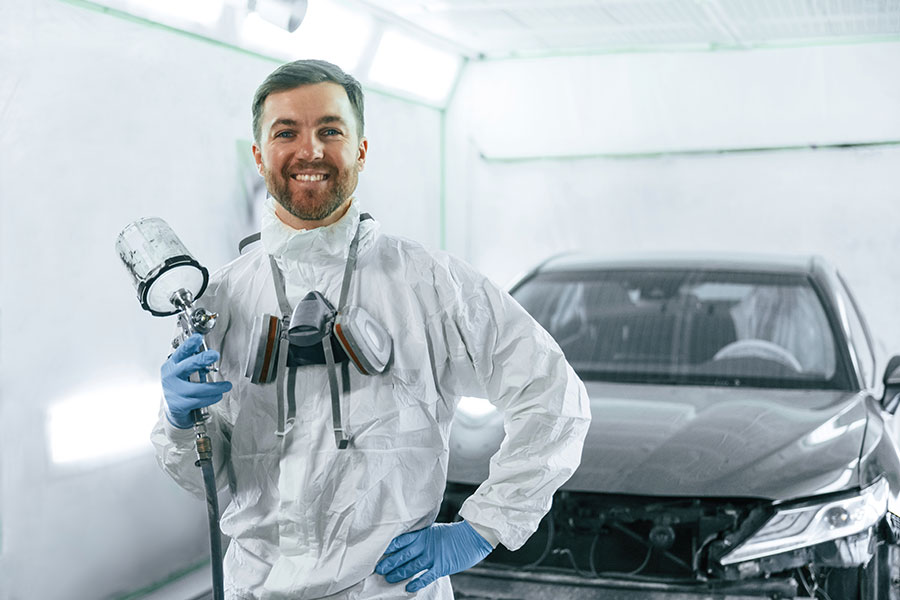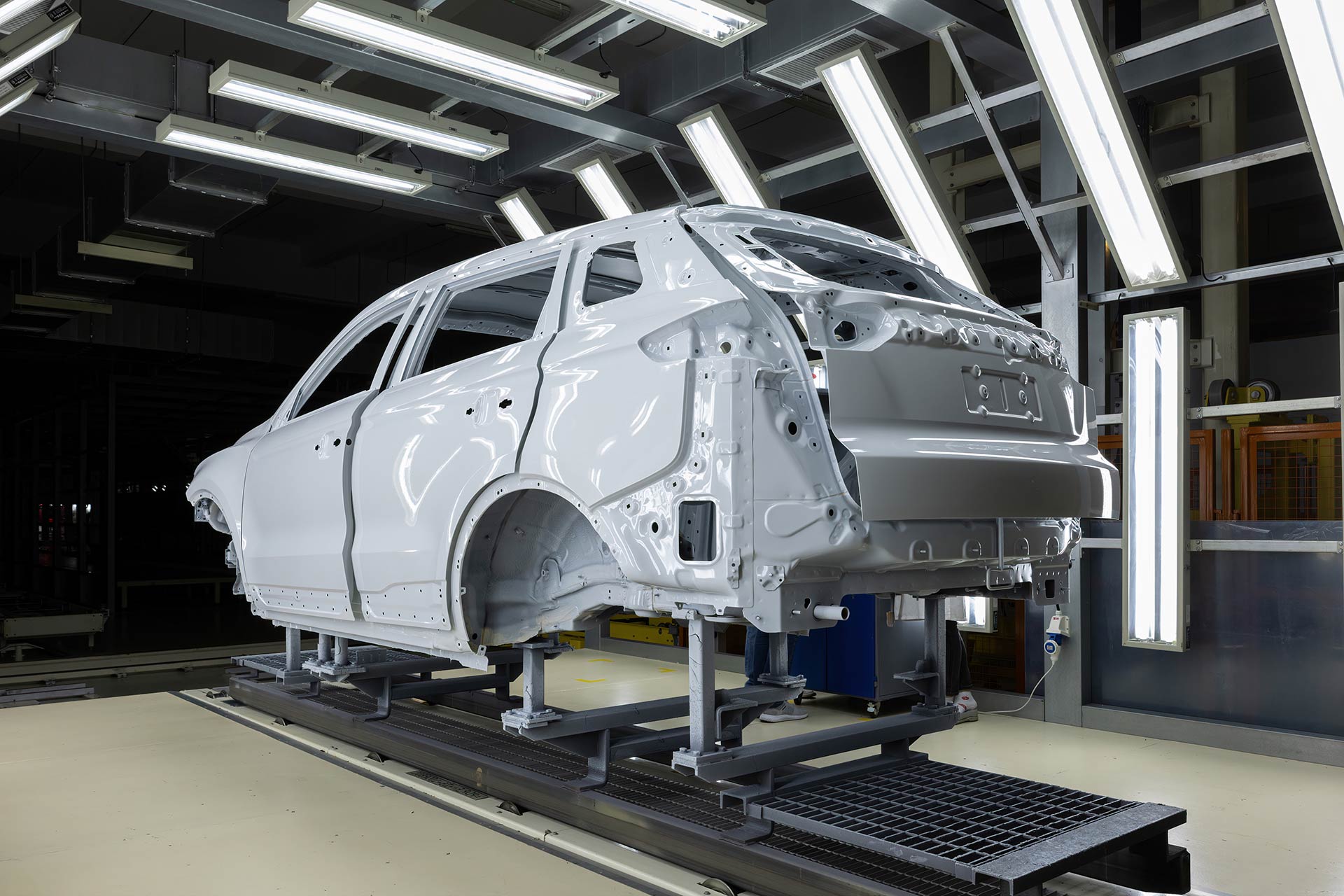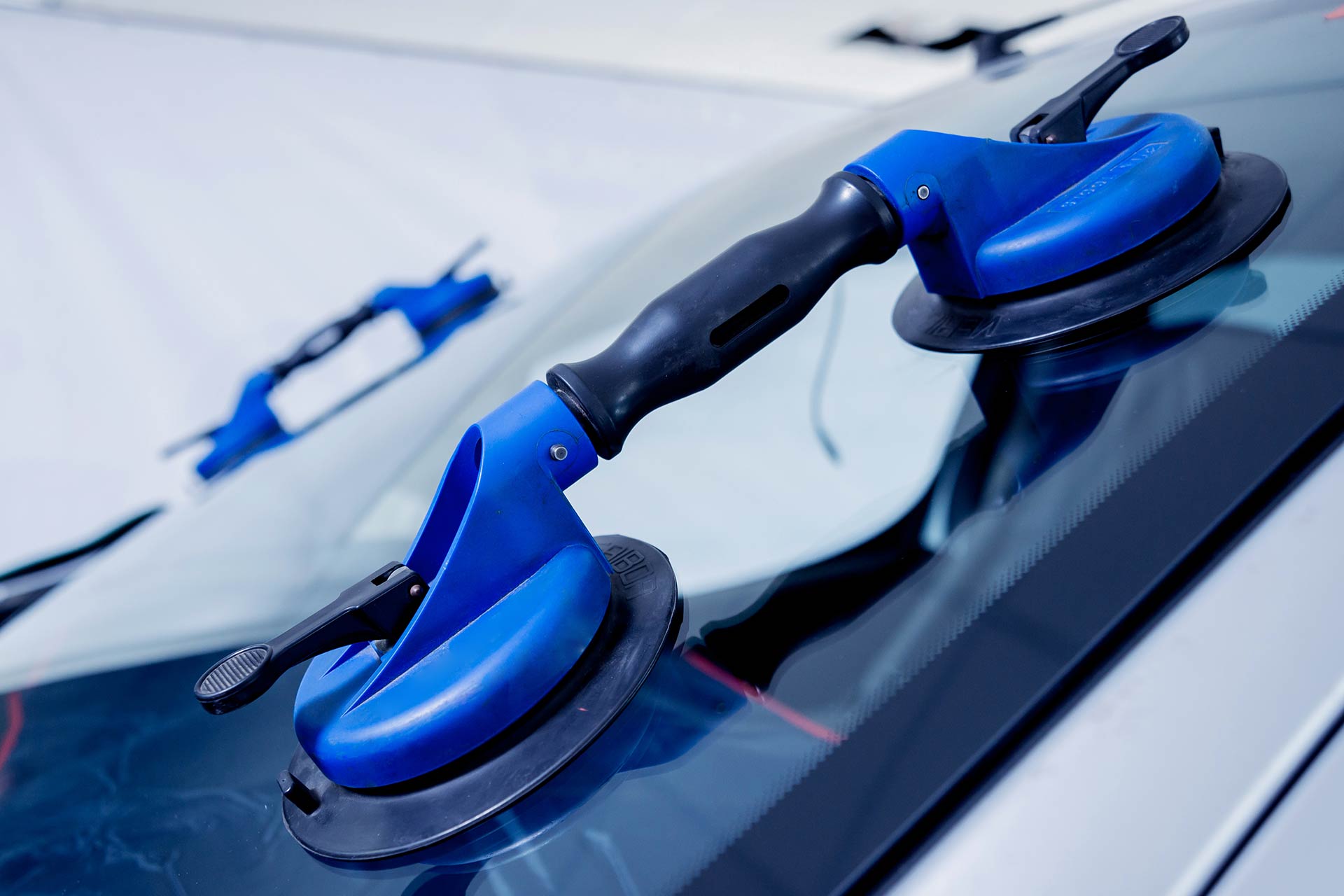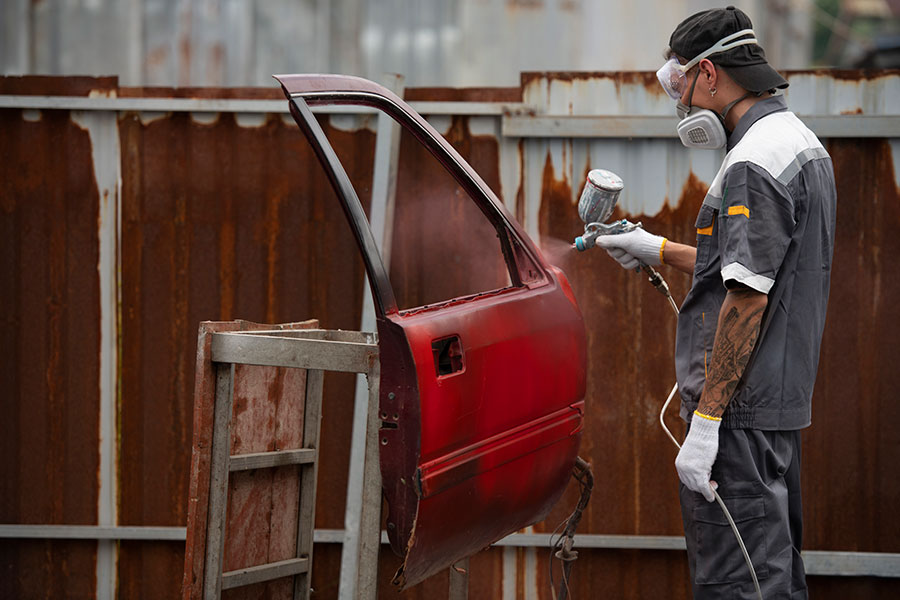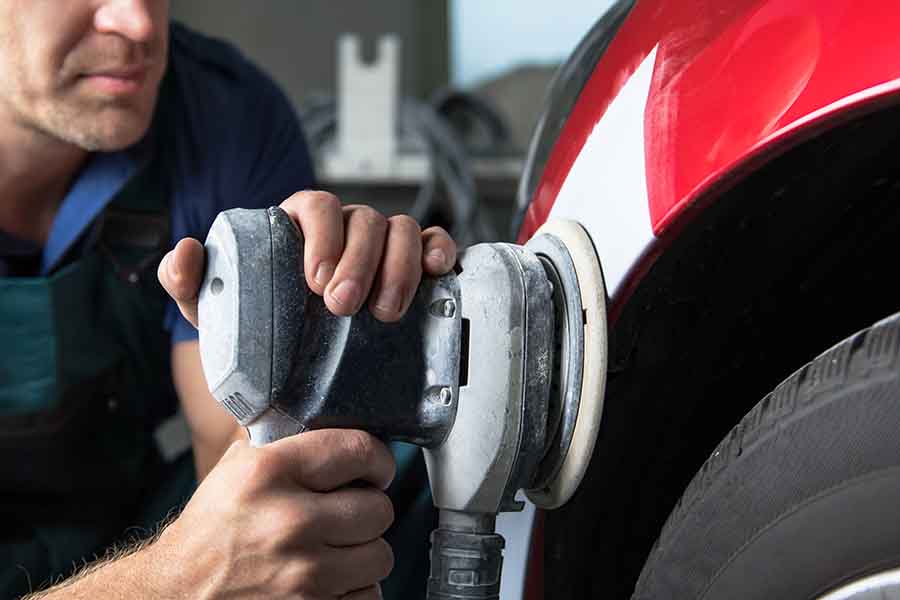When your car needs a fix after an accident, the journey through body shop repair might seem murky. Unlike the uncertainty of a DIY project, professional body shops offer a roadmap to restoration, but not all experiences are created equal. Knowing what to expect can turn a potentially stressful process into a smooth ride. From initial estimates to the final polish, understanding the steps involved demystifies the process and sets realistic expectations. This clarity ensures you're not left in the dark, guessing about costs or timelines. Dive into the essentials of body shop repair to arm yourself with knowledge, making sure your vehicle's return to glory is as seamless as possible.
Understanding Body Shop Repair
Common Services
Body shop repair often involves fixing damage to a vehicle's exterior. This can include dent removal, painting, and frame straightening. These services help in restoring the car's appearance and functionality.
Dent removal is a precise process. It requires skilled technicians to manipulate the metal back into place. They do this without harming the paint job. Painting, on the other hand, involves matching the car's original color and applying new coats to cover damages. Frame straightening is critical for vehicles involved in collisions. It ensures the car's structure is correctly aligned for safe driving.
Choosing a Shop
Selecting a reputable body shop is crucial for quality repairs. Look for certifications and reviews before deciding. Certified shops have technicians trained in the latest repair techniques. They also use proper tools and equipment.
A trusted shop guarantees their work, offering peace of mind that your vehicle is in good hands. They prioritize safety and quality workmanship. This ensures repairs meet or exceed industry standards.
Vehicle Longevity
Body shop repairs are essential for maintaining a vehicle's longevity and value. Ignoring minor damages can lead to more significant issues over time. Rust can develop from scratches or dents, compromising the car's structural integrity.
Regular maintenance and timely repairs keep your vehicle looking its best. They also help in retaining its resale value. A well-maintained car performs better and lasts longer, saving you money in the long run.
Essential Guide to Collision Repair
Repair Steps
After understanding body shop repair, knowing the steps of collision repair is crucial. The process begins with an in-depth assessment of the damage. Technicians use specialized tools to examine the extent of harm to the vehicle's structure and components.
Next, they create a detailed repair plan. This plan lists all necessary repairs, from fixing dents to replacing parts. The team then proceeds to disassemble the damaged areas to better access and repair them.
Repair work varies based on the damage. It may involve hammering out dents, welding new parts, or using fillers to reshape areas. Once structural repairs are complete, the vehicle moves to the painting stage.
Technicians apply primer, paint, and clear coat layers. They ensure each layer is dry before applying the next one. The goal is for the new paint to match the car's original color perfectly.
Finally, reassembly and a thorough cleaning happen before the final inspection. Technicians check every detail to ensure the repair meets high standards. Only then is the car ready for return to its owner.
Insurance Role
Navigating insurance claims is a significant part of collision repair. Most body shops work directly with insurance companies to streamline the process. After reporting an accident, an insurance adjuster assesses the damage to determine coverage.
Customers should understand their policy details and deductibles. They have the right to choose their repair shop, despite insurance recommendations. Communicating with both the insurance company and the repair shop ensures a smoother process.
Color Matching
Matching paint colors and materials is an art in collision repair. Technicians use a color matching system to find the exact shade of your car's paint. They consider factors like age and exposure to elements, which can change a car's color over time.
Modern technology aids in creating a seamless match. Paint manufacturers provide formulas based on car make and model. Sometimes, blending paint into adjacent panels is necessary for a perfect match.
Best Practices in Auto Body Work
Genuine Parts
Using genuine parts and materials is crucial for repairs. It ensures durability. Car owners should always ask for these when visiting a body shop. This practice prevents future problems.
Genuine materials match the car’s original specs. They fit perfectly. This reduces the risk of malfunctions. It also maintains the vehicle's value.
Maintenance Tips
After repairs, maintaining the vehicle is key to keeping it in top shape. Regular washing and waxing protect the paint and body. It also keeps the car looking new.
Avoid harsh chemicals on the repair site. Use products recommended by professionals. This helps preserve the integrity of the repair work.
Regular Inspections
Regular inspections by professionals can catch minor issues early. This prevents them from escalating into bigger problems. Car owners should schedule these checks at least once a year.
Professionals can spot signs of wear and tear that are not obvious to most people. Addressing these early saves time and money in the long run.
Scheduling and Timelines Explained
Repair Duration
Understanding how long body shop repairs might take is crucial. Different repairs have varying timelines. Small dents can often be fixed in a day. Major collision damage might need weeks.
The severity of the damage sets the pace. Minor scratches or dents are quicker to mend. Extensive harm requires more time. This is because of the detailed work involved.
Parts Availability
Parts availability greatly influences repair times. Common vehicle models usually have parts readily available. This speeds up the process. For rare models, parts may need to be ordered. This can add days or even weeks to the repair time.
It's important to communicate with the body shop. They can give updates on part orders. This helps set realistic expectations for completion.
Damage Extent
The extent of damage plays a big role in scheduling. Simple fixes are swift. Complex repairs, involving frame damage or electrical systems, take longer. Technicians must carefully assess and repair each issue.
Shops prioritize safety and quality. Thus, they take the necessary time to ensure a vehicle is road-worthy post-repair.
Alternative Transportation
Planning for alternative transportation is wise. Repairs can take longer than anticipated due to unforeseen issues. Having a backup plan ensures minimal disruption to daily routines.
Consider rental cars or ride-sharing services if the repair spans several days. Some insurance policies cover these costs under certain conditions.
Importance of Quality Control
Quality Measures
Body shops take several quality control measures to ensure repairs meet the highest standards. They start with a detailed assessment of the damage. Technicians use advanced tools to diagnose issues accurately.
They follow strict repair protocols. These guidelines ensure consistency in repair quality. Technicians undergo regular training. This keeps their skills sharp and up-to-date with the latest repair techniques.
Final Inspections
Before a vehicle is returned, it undergoes a final inspection. This step is crucial for ensuring that all repairs meet the shop's high standards. Specialists check each repair against a comprehensive checklist.
They look for any missed damages or inconsistencies. If they find issues, they address them immediately. This meticulous approach ensures that vehicles are safe and fully functional when returned to their owners.
Testing Procedures
Testing is another key aspect of quality control in body shops. After repairs, vehicles undergo various tests. These tests check the safety and performance of the vehicle.
Technicians may take the car for a test drive. They listen for unusual noises and check for smooth operation. They also perform computerized tests to ensure all systems function properly.
Impact on Safety
Quality control has a direct impact on the safety of the repaired vehicle. Without these measures, unnoticed issues could pose risks to drivers and passengers. For example, a poorly aligned wheel can lead to accidents.
By adhering to strict quality standards, body shops ensure that every vehicle is as safe as possible. This gives owners peace of mind knowing their car has been thoroughly inspected and tested.
Performance Assurance
The performance of a vehicle after repairs is just as important as its safety. Quality control measures ensure that cars not only look good but also perform well.
A well-repaired vehicle should handle just like it did before the accident. It should be reliable, with all features functioning as expected. This level of performance is achieved through rigorous testing and attention to detail during the repair process.
Training and Certification Insights
Expert Training
Body shop technicians undergo rigorous training before they can repair vehicles. This training covers everything from basic car structure to the latest in collision repair techniques. Technicians learn how to assess damage, perform repairs, and ensure that cars are safe to drive again.
They start with foundational knowledge, then move on to specialized skills. For instance, they learn how to replace car panels, fix dents, and match paint colors perfectly. This training is not a one-time event. Technicians must keep learning to stay on top of new methods and technologies.
Certification Importance
Certifications are proof that technicians have met high standards in their field. Many body shops require their technicians to be certified by recognized organizations. These certifications show that a technician has advanced knowledge and skills in body shop repair.
Choosing a shop with certified technicians is crucial, especially for complex repairs. Certified technicians understand the nuances of different car models and can ensure repairs meet manufacturer standards. This peace of mind is invaluable for car owners looking for quality repairs.
Ongoing Education
The automotive industry is always changing, with new materials and technologies emerging regularly. Ongoing education ensures that body shop technicians stay informed about these changes. They attend workshops and seminars to learn about the latest repair techniques and tools.
This continuous learning is essential for handling modern cars, which often include complex electronic systems and advanced materials. Technicians need to know how to work with these new technologies to perform effective repairs that last.
Diagnostics and Repair Streamlining
Modern Tools
Modern diagnostic tools have revolutionized how auto body shops identify issues with vehicles. Technicians can now plug into a car's computer system to quickly find out what's wrong. This process speeds up the diagnosis, ensuring that the repair work starts sooner.
These tools are incredibly accurate. They reduce the chance of human error, making sure that the problem is fixed right the first time. This accuracy saves time and money for both the shop and the vehicle owner.
Process Efficiency
Streamlined repair processes significantly reduce vehicle downtime. Once the issue is identified, a clear plan is put in place to tackle the repair efficiently. Shops often use software to manage these repairs, tracking progress and keeping everything on schedule.
This efficiency means cars spend less time in the shop. Owners get their vehicles back faster, which is always a plus. It also allows shops to work on more cars, improving their business.
Technology Impact
Technology has a big role in improving auto body work. Besides diagnostic tools, there are advanced machines that help in the actual repair process. For example, laser-guided systems ensure body panels are aligned perfectly.
3D printing is another technology being used more frequently. It can create parts that might be hard to find or expensive to buy. This not only speeds up repairs but can also reduce costs.
Customer Relations and Satisfaction
Clear Communication
Clear communication is key. It bridges the gap between the technical world of auto repair and the customer's need for understanding. After diagnosing and streamlining repairs, body shops must keep customers in the loop. They should explain what repairs are necessary and why.
Customers appreciate updates. These can be through calls, texts, or emails. This way, they stay informed about their vehicle's status. It reduces anxiety and builds trust.
Feedback Importance
Feedback shapes services. It helps body shops understand what they're doing right and where they can improve. Positive reviews boost a shop's reputation. They attract more customers.
Negative feedback is also valuable. It offers a chance to fix problems and improve customer satisfaction. Shops should actively ask for feedback. They can use surveys or follow-up calls.
Billing Transparency
Transparent billing is crucial. Customers need to know what they're paying for. A detailed bill explains each charge. It covers parts, labor, and any additional fees.
This transparency ensures there are no surprises. It also shows the shop's honesty and integrity. Customers feel respected and valued when they see a clear breakdown of costs.
Embracing Sustainable Practices
Eco-Friendly Materials
Body shop repairs are increasingly turning towards eco-friendly materials. This shift not only helps in protecting the environment but also aligns with customers' growing preference for sustainable services. Shops now use materials that are less harmful to the planet, making a significant difference.
They choose paints that have a lower volatile organic compound (VOC) level. These water-based paints are better for the environment and for the people who work with them every day. By reducing harmful emissions, shops contribute to cleaner air and a healthier workplace.
Recycling Parts
Recycling parts is another way body shops are becoming more sustainable. Instead of ordering new parts for every repair, they look for ways to reuse and recycle. This approach not only minimizes waste but also lowers the demand for new parts production.
Shops often salvage usable parts from damaged vehicles, which can then be refurbished and used in other repair projects. This practice not only reduces the amount of waste going to landfills but also offers a cost-effective solution for customers needing repairs.
Cost Savings
Adopting sustainable practices brings about significant cost savings over time. By using water-based paints and recycling parts, shops can cut down on their expenses. These savings can then be passed on to the customer, making repairs more affordable.
Furthermore, sustainable practices can lead to lower energy costs. Energy-efficient lighting and equipment reduce electricity usage, further decreasing operational costs. These savings contribute to a competitive pricing model that benefits both the shop and its customers.
Summary
Navigating through body shop repair doesn't have to be daunting. From understanding the basics, ensuring best practices, to embracing sustainability, you've got the insights needed to make informed decisions. Quality control, timely scheduling, and excellent customer service stand at the heart of a satisfactory repair experience. Keeping these elements in check ensures your vehicle returns to its prime condition with efficiency and care.
It's crucial to choose a body shop that aligns with these values—where training and certification are prioritized, diagnostics are precise, and sustainable practices are embraced. Your satisfaction as a customer reflects the quality of work and dedication of the team behind your car's restoration. Ready to give your vehicle the care it deserves? Seek out a certified body shop that resonates with these standards today.
Frequently Asked Questions
What should I expect during a body shop repair process?
You can expect a thorough assessment of damages, an explanation of necessary repairs, and a clear timeline for the work. Quality control ensures your vehicle returns to you in top condition.
How long does collision repair usually take?
Repair times vary based on damage severity but expect clear communication on scheduling and timelines from your body shop.
Why is quality control important in auto body repair?
Quality control guarantees repairs meet safety and performance standards, ensuring your vehicle is safe and reliable post-repair.
What certifications should I look for in a body shop?
Look for shops with ASE (Automotive Service Excellence) or I-CAR (Inter-Industry Conference on auto collision repair) certifications, indicating trained and knowledgeable technicians.
How do body shops ensure customer satisfaction?
Shops prioritize clear communication, efficient service, and follow-up to ensure your expectations are met or exceeded.
What role does sustainability play in auto body repair?
Sustainable practices include using eco-friendly materials and minimizing waste, reflecting a commitment to environmental responsibility alongside quality repairs.
